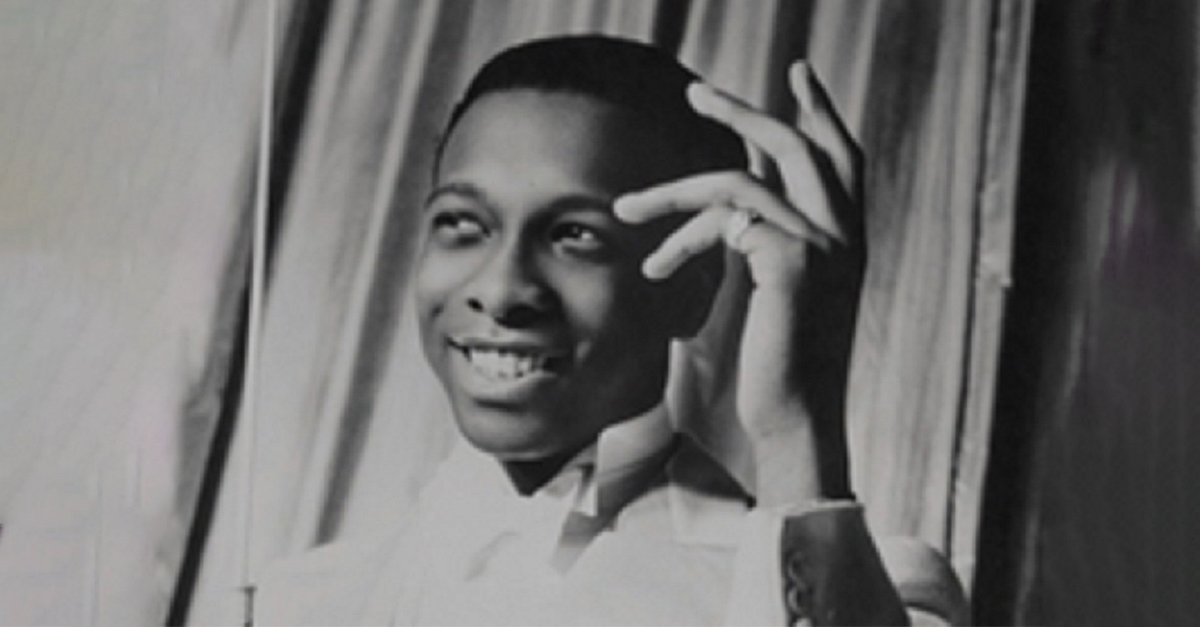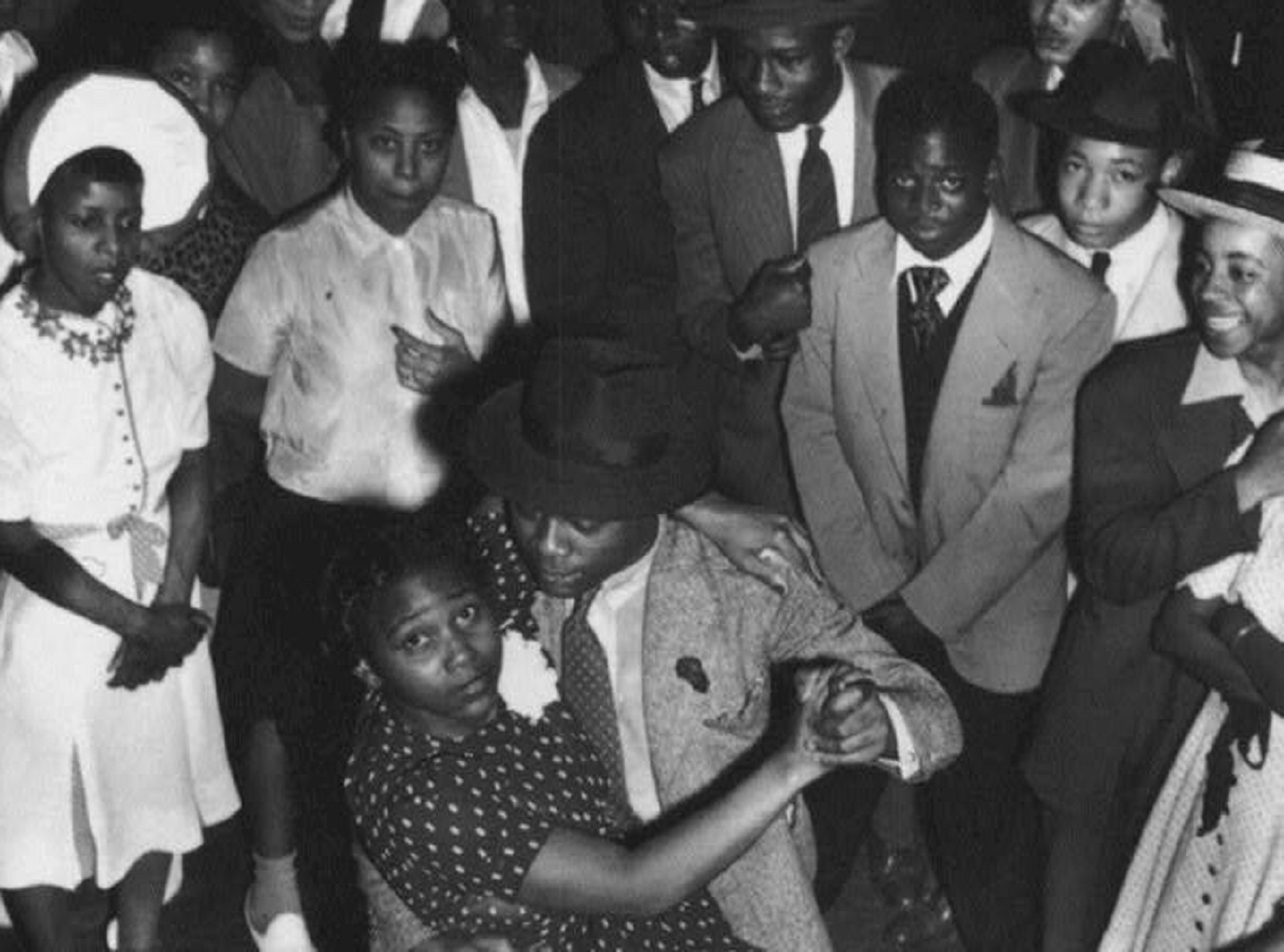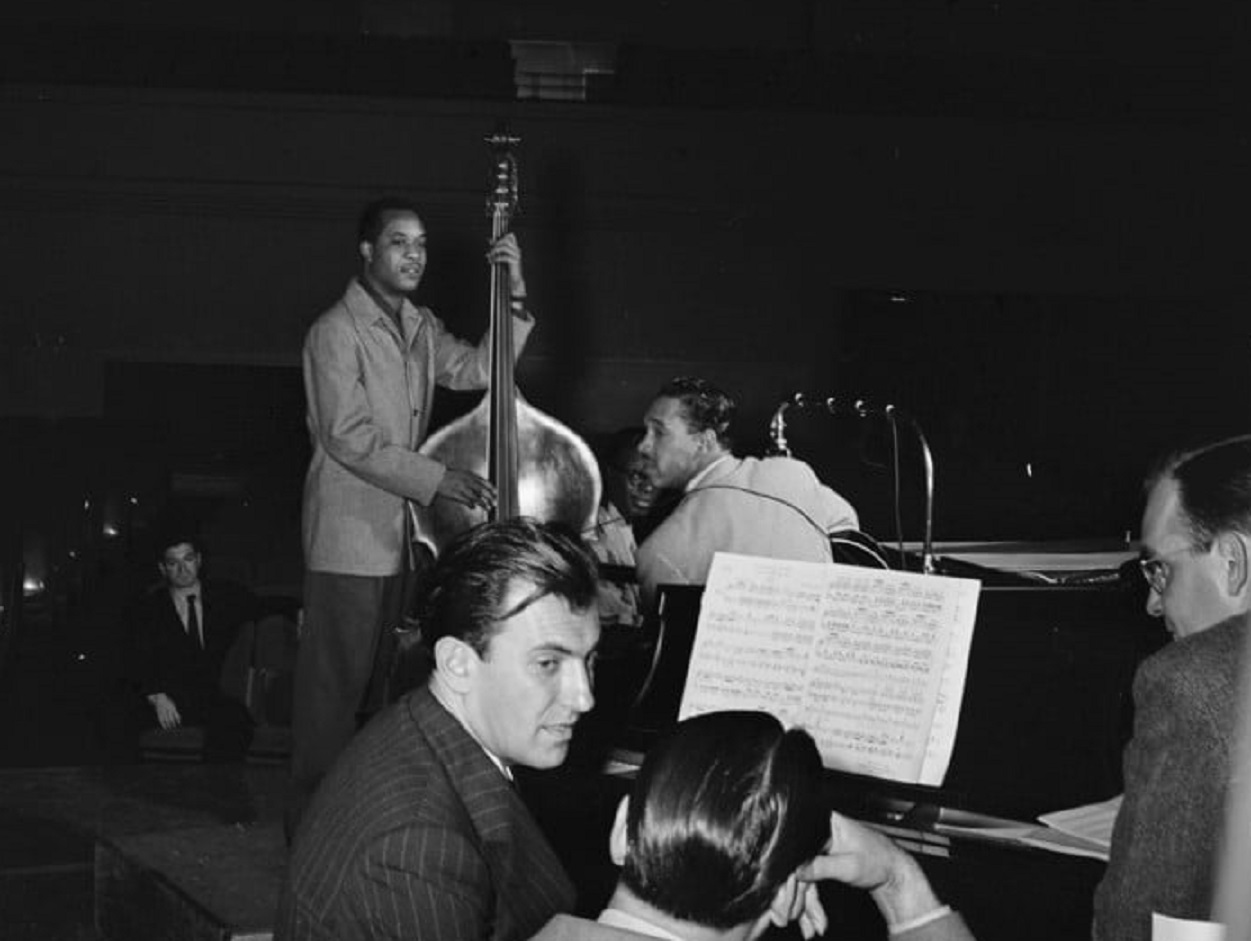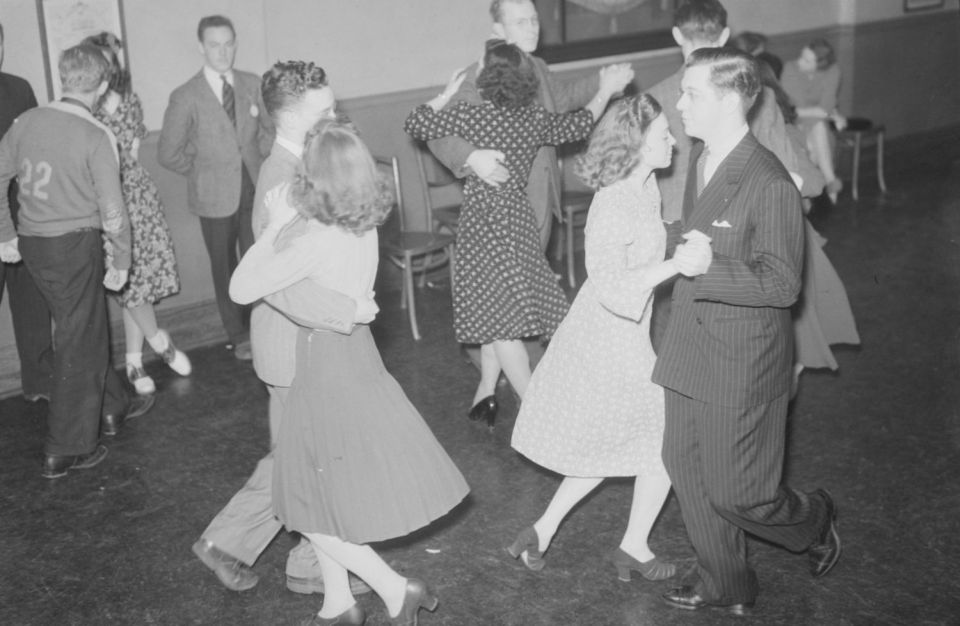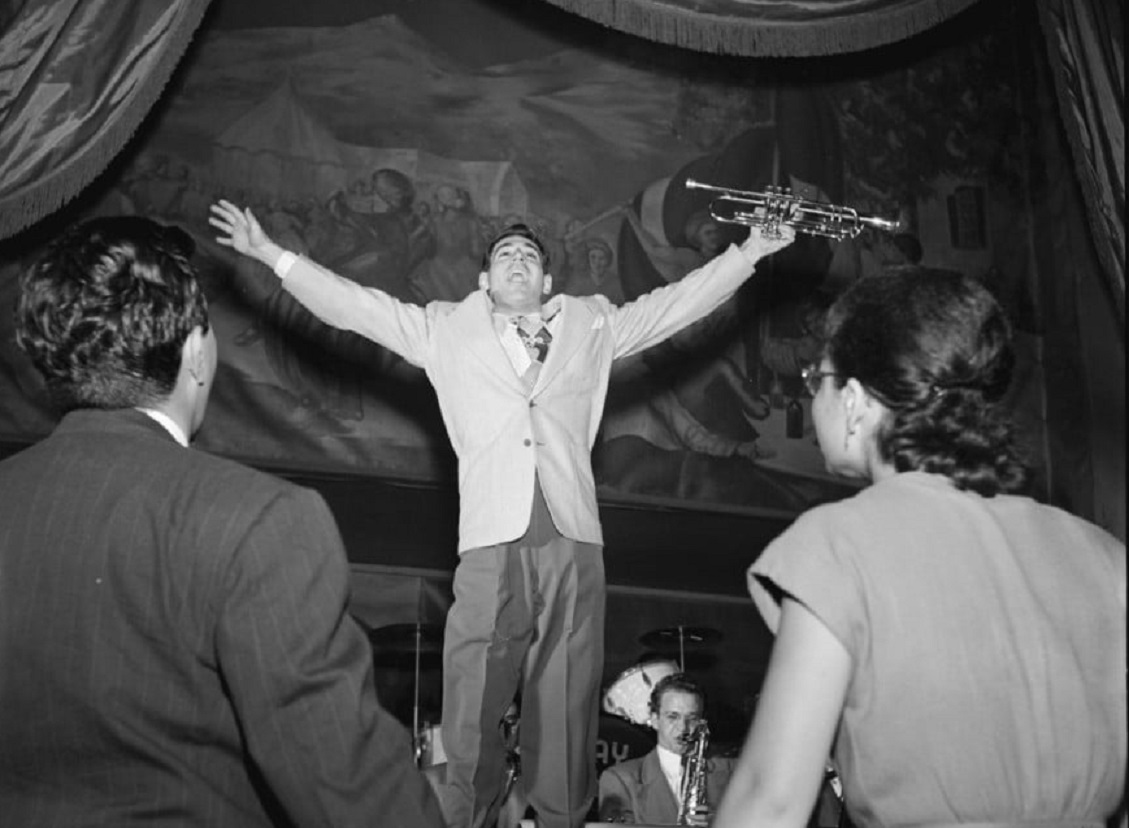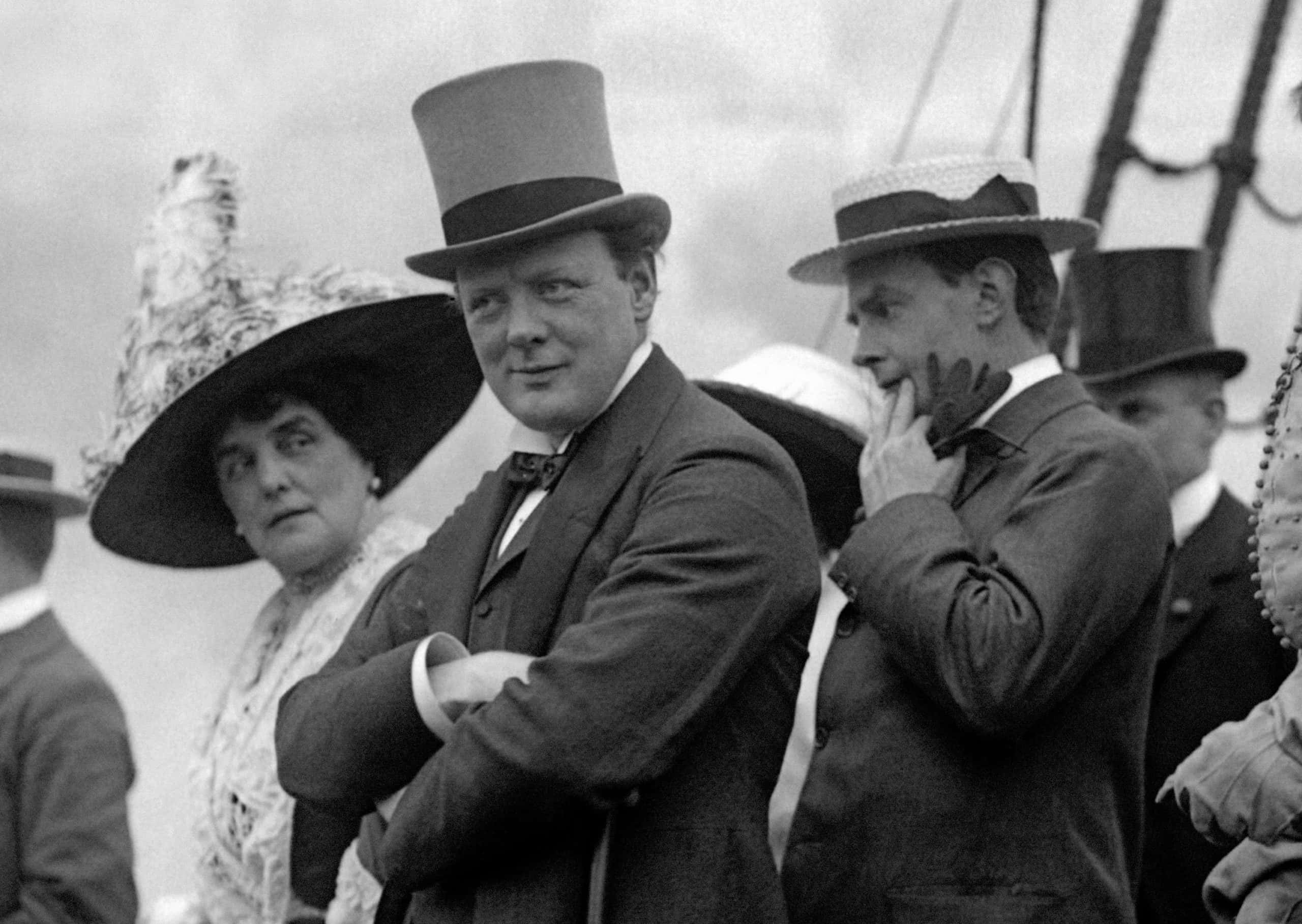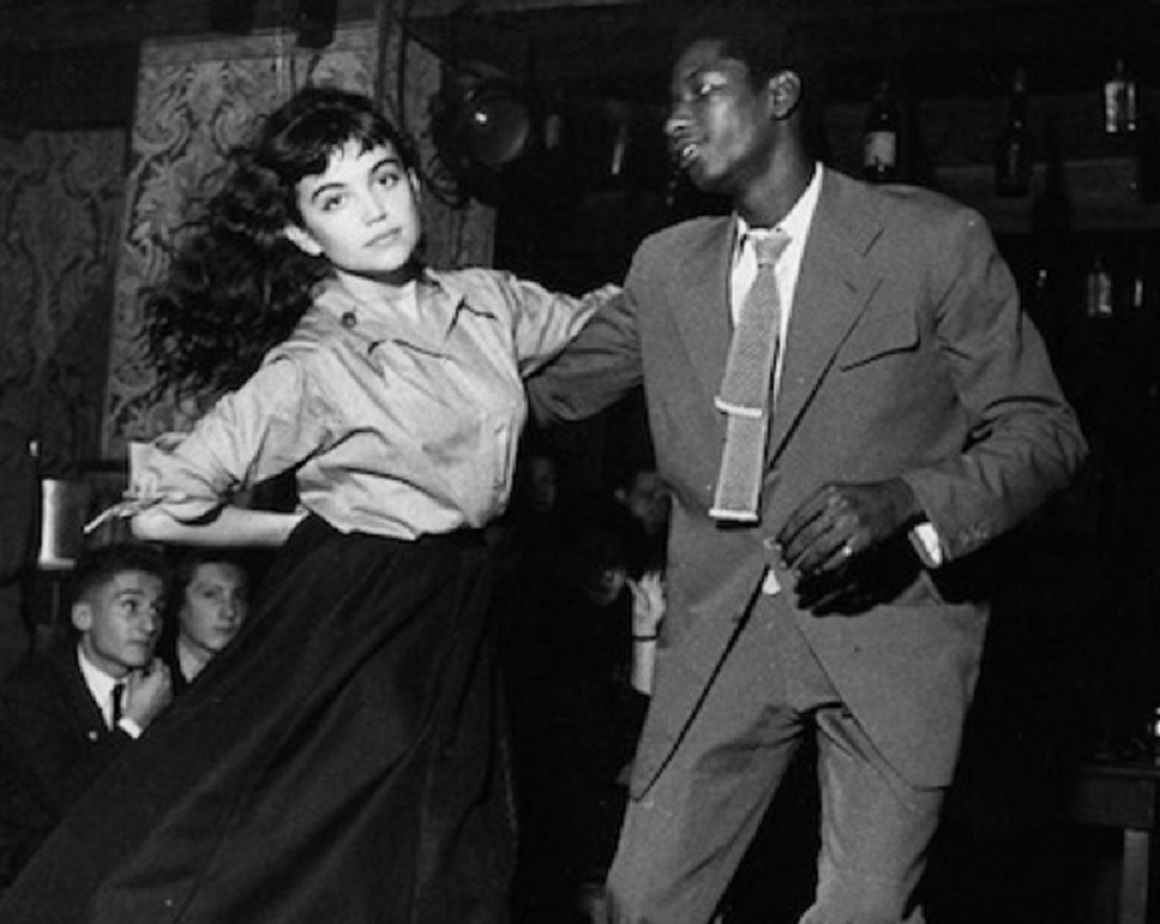Ken “Snakehips” Johnson entertained the rich and famous of London, right up until his jaw-dropping and tragic end.
1. He Entranced Audiences
During WWII, Britain was looking for any excuse to celebrate and wash away their sorrows—and Ken “Snakehips” Johnson was their go-to man. Lithe and captivating, Johnson toured the café circuits with . Yet all the while, he was hiding deep secrets and bitter feuds. Ones that would only be fully unearthed after his jaw-dropping death.
 National Portrait Gallery, Wikimedia Commons
National Portrait Gallery, Wikimedia Commons
2. His Father Tried To Push Him Down A Different Path
Born in Guyana in 1914, Johnson showed from the beginning just how much he was willing to sacrifice for the spotlight. Although his father wanted him to study medicine, even sending his son to the UK when the boy was 14 for that express purpose, Johnson had other ideas. He threw himself into his innate talent for dancing instead.
It was the beginning of his destiny, and his doom.
3. You Couldn’t Look Away From Him
By the time he was fully grown, Johnson was an enthralling six feet, four inches tall, and his willowy form could hold the attention of even the most disgruntled audiences. He also knew how to dress his body. His trademark was to wear white tails, and he would conduct orchestras with an extra-long baton. Soon, though, he had another trademark entirely. Gainsborough Pictures, Oh, Daddy! (1935)
Gainsborough Pictures, Oh, Daddy! (1935)
4. He Knew How To Package Himself
With his memorable presence, Johnson was soon touring the Caribbean and beyond. After this, he ended up temporarily in Harlem—and it’s here he really learned how to move his body. In New York, he earned the nickname “snakehips” for "the suggestive manner” that he could “wind his hips”. Essentially, he was Elvis way before Elvis. And his private life was just as messy as that icon’s.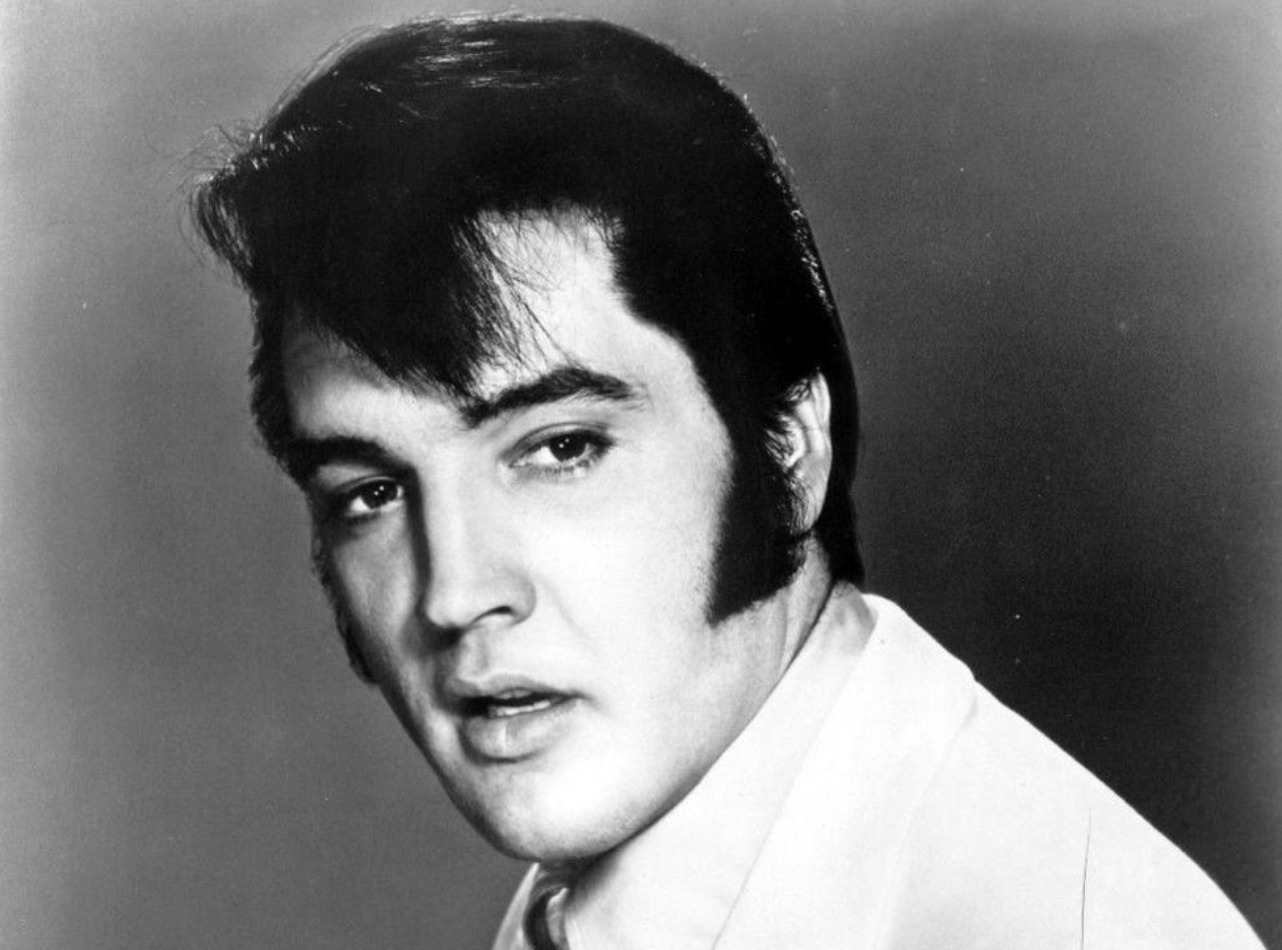 MGM, Wikimedia Commons
MGM, Wikimedia Commons
5. He Had An Ego
Johnson knew he was destined for great things, and in the 1930s he built up an all-Black jazz band in England with trumpeter Leslie Thompson. True to Johnson’s confidence, they named themselves variously the “Aristocrats of Jazz,” the “Emperors of Jazz,” or “The Jamaican Emperors”. They got success almost immediately…and the in-fighting started.
6. He Clashed With His Bandmate
Leslie Thompson, being an accomplished musician, was the de facto leader of the group, while Johnson acted as the band leader and hype man. It wasn’t a comfortable dynamic for the two stars, and the insults started flying. Thompson once snidely said that Johnson was only “a stick wagger—he was no musician”. But Johnson had ideas of his own.
7. He Copied His Idol
As far as Snakehips was concerned, Thompson could fiddle away with his music; he was the real draw for the band. Johnson knew he had charisma to spare, and he spent his days working on his showmanship, which he modeled after popular Black entertainer and band leader Cab Calloway. Yet Johnson didn’t just control his own image—he also controlled others. Carl Van Vechten, Wikimedia Commons
Carl Van Vechten, Wikimedia Commons
8. He Made Demands Of His Colleagues
Johnson was a master of public perception, and he got the members of his band to wear white dinner jackets and choreographed even their movements when they played instruments. This, of course, helped the band make an impact on even the tipsiest of audiences.
But this wasn’t the only reason he lined the band up that way…he had a much more cunning angle.
 Library of Congress, Wikimedia Commons
Library of Congress, Wikimedia Commons
9. He Was Wily
Johnson hadn’t spent a childhood defying his father without learning a thing or two about how to get what he wanted, and he needed all of those skills do deal with white people in early 20th-century England. At the time, many venues wouldn’t allow mostly white bands to have an anomalous Black member. However, they would allow all-Black bands as “novelties”. So in making sure his band was a unit, Johnson also made sure they got into the best clubs.
Some of his other ideas for the band, however, weren’t so much brilliant as downright scandalous.

History's most fascinating stories and darkest secrets, delivered to your inbox daily.
10. He Perpetuated A Big Lie
The Aristocrats of Jazz were supposed to be an all-Black band, yes, but that wasn’t exactly the truth. While most of the members were indeed Black, Johnson had a difficult time finding Black trombonists. His solution would make modern eyebrows raise. Instead, he found two white men, Reg Amore and Freddie Greenslade, and had them plaster their faces with burnt cork for shows to keep up, er, appearances.
Of course, Johnson would quickly prove he could be more diabolical than this.
11. He Was A Diva
In no time at all, the Aristocrats were the darlings of the club circuits of the mid-1930s, and Johnson made darn sure he got what was his. Despite Leslie Thompson’s “leadership” of the band, Johnson continued to feel that he contributed the most, and he accordingly got paid more than the rest of his bandmates during this time.
At this point, Johnson was soaking up the love and attention of adoring crowds every night. But it wasn’t enough. He wanted more, and that meant betrayal.
12. He Earned A Residency
At the end of 1936, the Aristocrats had earned a lucrative gig as the regular house band of the Old Florida club, a trendy spot in the posh Mayfair neighborhood of London. That’s when Johnson saw a cruel opportunity—and took it. In early 1937, he got his manager to renegotiate the band’s contract. When the other members read it, their jaws dropped. Francisco Anzola, Flickr
Francisco Anzola, Flickr
13. He Cut Out His Bandmate
With a keen eye for what benefitted him most, Johnson had worded the contract so that it never mentioned Leslie Thompson’s name, which now meant that Snakehips controlled the orchestra entirely, with no one who could tell him what to do. Thompson was outraged, and Johnson must have known he’d be. But it might not have foreseen his next move.
14. His Crew Abandoned Him
Leslie Thompson didn’t suffer fools gladly, and he was even less tolerant of injuries to his pride. Rather than sticking around in a band Snakehips was so determined to have for his own, Thompson up and left—and took several members with him, those who were loyal to him and disgusted at Johnson’s finagling. But Johnson had the last laugh. Library of Congress, Picryl
Library of Congress, Picryl
15. He Didn’t Admit Defeat
Snakehips was nothing if not adaptable, and he simply set about finding other musicians to replace the ones who’d left. And although he really put the “snake” into “Snakehips” when it came to these back-door negotiations, he appeared to be one capable leader nonetheless. The band’s popularity only grew, even leading some of the members who’d left to come crawling back. But Johnson was just getting started.
16. He Was On Top Of The World
At the turn of the new decade, Johnson finally got everything he’d wanted. His band, now called the West Indian Dance Orchestra, was so famous that they had appeared in films, magazines, and BBC television broadcasts. He had, finally, truly made it, with no one else in the group threatening his ascendancy. Which is right about when it all began to fall apart. Gainsborough Pictures, Oh, Daddy! (1935)
Gainsborough Pictures, Oh, Daddy! (1935)
17. He Was In The Middle Of A Crisis
In 1939, Johnson’s band was so popular they were set to attend the New York World’s Fair. Then devastating news reached them. WWII was officially on in Europe, and all of their plans for various tours were scuttled. However, the lack of international touring possibilities was soon the least of Johnson’s worries. Or at least it should have been.
18. His World Was On Fire
During this time, everyone was terrified at the threats that the Germans kept sending Britain—threats that indicated they would soon fly planes over the nation and bomb them into oblivion. Although for now these were merely menacing words, they would soon become all too true. But the headstrong Johnson was barely listening, and he began making rash decisions. Ricky Esquivel, Pexels
Ricky Esquivel, Pexels
19. He Ignored The Warnings
In the face of this cruel reality, Johnson did what he did best: Celebrate anyway and keep on going. He seemed so outwardly unfazed by the German threats, he even signed the band up to begin a residence at a new club, Willerby’s. After all, the show must go on, right? And what was a show without a band leader like Ken “Snakehips” Johnson? Yet reality kept pummelling him.
20. His Club Kicked Him Out
Almost as if the world were begging Johnson to slow down for now and take shelter, Willerby’s ended up clothing just months into the band’s residence. Why? Simply because of the possibility that the Germans would start their offensive any day now. For Johnson, though, this only meant he had to look for another club to perform in.
He had no idea that the one he found would be his grave.
21. He Had A Racy Secret
To be fair, as the New Year rang in 1940 and WWII kept raging, Johnson was more than a little distracted. See, he was keeping a ruinous secret. Johnson was gay, and had just met a man who captivated him as much as he captivated himself: The British critic Gerald Hamilton. And while Johnson’s new lover was certainly enthralling…he was a whole lot of other things, too.
22. His Lover Was A Man About Town
Snakehips lived a fast life, so it’s no surprise that he chose one fast paramour. Hamilton ran with a hoity-toity social crowd that included current Prime Minister Winston Churchill, racy actress Tallulah Bankhead, and the hedonistic writer Christopher Isherwood. He was also over 20 years older than Johnson. But when it came to Hamilton, that’s just the tip of the iceberg.
23. He Had A “Wicked” Partner
Hamilton was infamous as “the wickedest man in Europe,” and that wasn’t only on account of his vicious wit. His background was one enormous pandora’s box. Earlier in his life, Hamilton had worked as a “fixer” for politicians, then as an informer on various government agencies and cells. He had even been behind bars several times for his shady dealings.
All in all, most regarded Johnson’s current obsession as a threat to national security…oh, and there was one more thing. Two, really.
24. He Was An Adulterer
At the time that Johnson met Hamilton, the older man was already married to a woman. But, well, it gets shadier than that. Hamilton was in a strict marriage of convenience with Suzanne Renou, who he had paid 20,000 pounds to marry him in 1933. Before that, he had married (and soon divorced) a woman named Diana Parker in the same fashion.
Only, if his marriage was such a sham, Hamilton had a funny way of showing it.
25. He Was A Third Wheel
Far from being estranged from Suzanne Renou, Hamilton felt extremely warmly toward her. He kept a photo of her with him at all times and would refer to her as “my wife” whenever he showed the likeness to people. Still, if Johnson cared about any of this—his partner’s ugly past or current foibles—he didn’t act like it. No, he lapped it right up.
26. He Delighted In The Scandal
From those who knew Hamilton and Johnson during their brief and highly secretive time together, the pair relished in their May-December romance. They quickly moved in together in a place in Belgravia, and Johnson was reportedly delighted by Hamilton’s “Edwardian airs and malicious anecdotes,” while Hamilton liked to teach Johnson about “the glories of a worthwhile [wine] cellar”.
For a while, then, they were in heaven. Plus, Johnson had another reason to feel a false sense of security.
 No Swan So Fine, CC BY-SA 4.0 , Wikimedia Commons
No Swan So Fine, CC BY-SA 4.0 , Wikimedia Commons
27. He Had A Secret Weapon
At the beginnings of WWII, Johnson was in something of a sweet spot. See, while many musicians were being conscripted for service, Johnson and his band—who were largely from British colonies—were not. As such, Johnson not only avoided active duty, but there was also an uptick in demand for the band’s services, since other musicians around England had gone to the front.
Even so, he was about to get a rude awakening.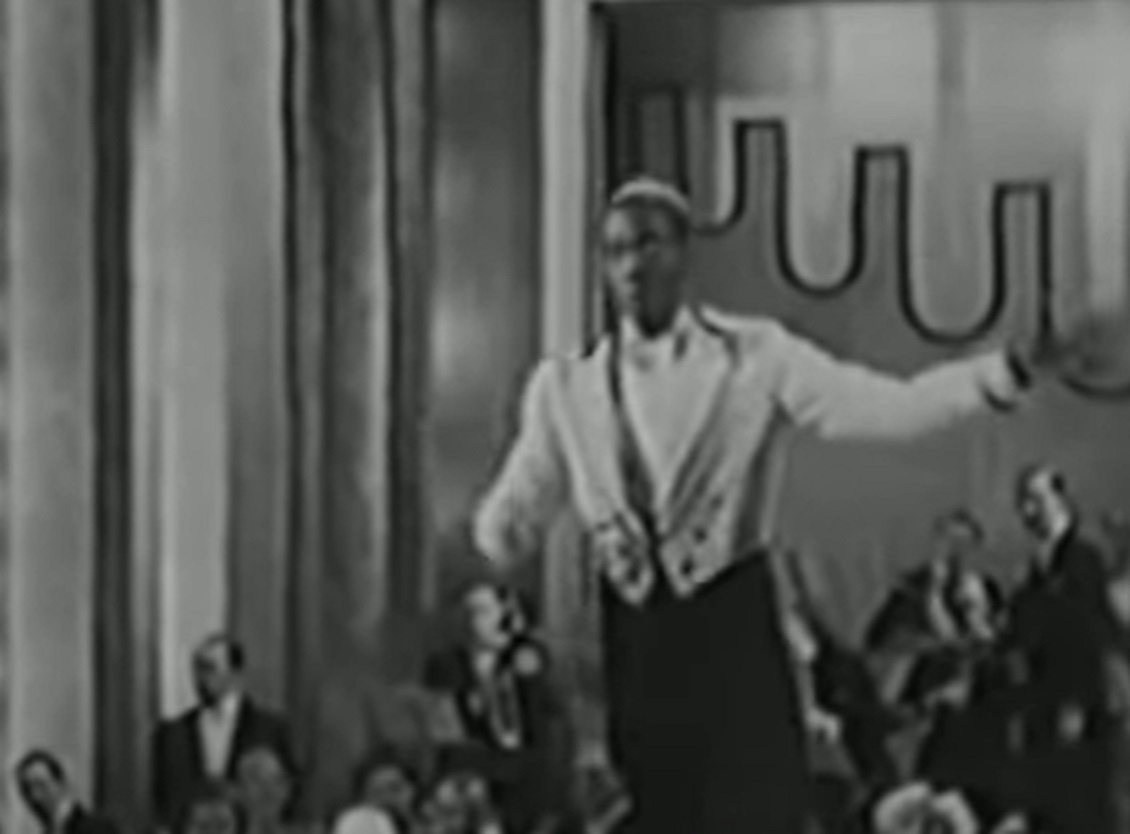 Gainsborough Pictures, Oh, Daddy! (1935)
Gainsborough Pictures, Oh, Daddy! (1935)
28. London Began Burning Around Him
Although he mostly affected bravado about WWII, Johnson soon witnessed events he couldn’t ignore. In 1940, the same year that he began a relationship with Gerald Hamilton, the Germans finally made good on their threats and began the infamous offensive on Britain known as the Blitz. Night or day, the Luftwaffe began pounding the cities of the isles, and Johnson finally had to make a terrified decision.
29. He Fled His Home
At the beginning of the Blitz, Johnson’s smooth exterior finally cracked. In a show of his fear, he and Hamilton moved houses to be further away from the capital, in the hopes that the Germans weren’t likely to bomb less built-up areas. They went far away to Berkshire, with Johnson commuting all the way into London for his shows and coming back home in the wee hours of the morning. It wouldn’t be enough.
30. He Made A Sweet Deal
With their previous residency of Willerby’s shuttering its doors in late 1939, Johnson and the band were still in the market for a new club residency. Thanks in part to that aforementioned low supply of musicians, they managed to land a regular gig at the very upscale club Café de Paris, which had seen performers like Marlene Dietrich and Dorothy Dandridge grace its stage.
It was the opportunity of a lifetime, and Johnson jumped right on it. Besides, there was one more bonus to the venue. Getty Images
Getty Images
31. He Thought He Was Safe
Unlike some other London clubs at the time, the Café de Paris offered performers like Johnson and his band a semblance of safety. While there were now nightly raids on London—and the streets in blackout to deter the Luftwaffe—the club felt that its position underground, underneath the Rialto cinema, meant it was basically a bomb shelter.
They even advertised it as “the safest and gayest restaurant in town”. But in this they were very, very wrong. Andy Mabbett, CC BY-SA 3.0 , Wikimedia Commons
Andy Mabbett, CC BY-SA 3.0 , Wikimedia Commons
32. He Was In A Death Trap
Londoners at this point were more than happy to drink away their troubles, with one commenter recording how revelers “groped their way through the black-out to the Savoy and the Café de Paris…and enjoyed the added thrill of dancing the night away while anti-aircraft guns thudded away outside”.
They weren’t thinking, then, of how little protection the Café really offered. In fact, only the Rialto’s glass ceiling and the club’s own meager ceiling provided safety from the outside world. So on March 8, 1941, the stage was set for a tragedy.
33. He Was The Center Of High Society
That day in March, Johnson and his band were set to perform at the Café de Paris again, to much excitement from young Londoners. In fact, Winston Churchill’s daughter Mary and her friends were planning to watch “slim grey beautiful Snakehips” perform, and were particularly excited about it. Johnson’s demeanor, however, was quite different.
 Ron Kroon / Anefo, CC BY-SA 3.0, Wikimedia Commons
Ron Kroon / Anefo, CC BY-SA 3.0, Wikimedia Commons
34. His Friends Were Terrified For Him
Before his show, a languid Johnson had drinks with some friends at the nearby Embassy club. That’s when he got a dire warning. Even as they spoke, central London was experiencing heavy bombing from the Luftwaffe, and they tried to convince him not to go off to the club for his performance, or at least to take a taxi so he wasn’t exposed on the way over. Johnson’s response sealed his fate.
35. He Laughed It Off
You were never going to keep Ken “Snakehips” Johnson from the stage. He waved off his friends’ warnings, citing his commitment to the club’s owner. As he walked out of the Embassy and into the darkened, unlit streets of London, he said airily that with the color of his skin, “Nobody will notice me in the dark”.
Only, it wasn’t the walk to the Café de Paris that Johnson had to worry about.
 Giuseppe Milo, CC BY 3.0, Wikimedia Commons
Giuseppe Milo, CC BY 3.0, Wikimedia Commons
36. He Ran To His Doom
Johnson, still panting from his brisk journey over, hit the Café de Paris at 9:45 pm and began playing with his band almost immediately. Wearing a sharp tuxedo and a red carnation, they started with their hit “Oh Johnny” to great applause from the crowd. People began to filter onto the dancefloor… and when disaster happened, it happened with vicious speed.
 Gainsborough Pictures, Oh, Daddy! (1935)
Gainsborough Pictures, Oh, Daddy! (1935)
37. It Happened In The Blink Of An Eye
Suddenly, a German bomb hit the club, and it happened in the worst way imaginable. The explosive device went right down a ventilation shaft and ended up directly inside of the Café de Paris. As it denotated, oddly no one in the club heard it—but they couldn’t fail to see and feel it. It sent out a bright, blue flash, then choked the air with dust.
When the chaos settled down, the screaming began.
38. It Was A Gruesome Scene
It was immediately clear that Johnson’s band, still on stage at this time, had not escaped unscathed. One of the band members, Yorke de Souza, got his wits about him and began looking for survivors—only to find another of his bandmates, David Williams, had been cut in half in the wake of the blast. The rest of the scene was even more haunting.
39. No One Understood The Impact
So unexpected and quick was the explosion, an entire table of six guests had perished in the blast, all of them seated, and all of them without any external signs of injury. The head waiter of the club was gone, and one survivor had her stockings completely torn off, although she was otherwise in mint condition. As for Johnson?
40. His Bandmates Scrambled For Safety
Because of the intense bombing going on throughout London, it took ambulances a painfully long time to reach the Café de Paris, but once they did, the survivors still had no real idea what was going on. Joe Deniz, the band’s guitarist, survived the blast and recalled, “The next thing I remember was being in a small van which had been converted into an ambulance”.
That’s when someone told him the gut-wrenching news.
41. They Made A Dark Discovery
As Deniz recalled, it was only as he was slumped over in the makeshift ambulance, suffering from a broken leg and wondering what had gone wrong, that he learned the truth. Someone told him three chilling words: “Joe, Ken’s dead”. Deniz admitted that “It broke me up”.
How could someone as vibrant as Ken Snakehips Johnson be gone? The reality was even more heartbreaking.
 Gainsborough Pictures, Oh, Daddy! (1935)
Gainsborough Pictures, Oh, Daddy! (1935)
42. His End Was Swift But Brutal
In the end, Johnson was nowhere near as lucky as the table of patrons who perished without a scratch on them. Although he too was gone instantly—a small mercy given everything—the blast had decapitated him. It was a brutal death, and one many people in his life had tried to help him avoid. Yet Johnson still didn’t deserve what happened next.
 Aftenposten, CC BY-SA 3.0 , Wikimedia Commons
Aftenposten, CC BY-SA 3.0 , Wikimedia Commons
43. London Almost Didn’t Mourn Him
You might think that in the wake of the Café de Paris’s destruction, London nightlife would have grinded to halt for the evening. That’s not what happened at all. Instead, Johnson’s memory got a bitter insult. As screenwriter Sid Colin said, "The West End paused for a moment of horrified silence—then the dance went on”.
In fact, when Winston Churchill’s daughter Mary tried to go to the Café de Paris for Johnson’s performance as she’d planned, then found her way blocked by rubble, she simply took her group to another place to dance. Yet not everyone could forget Johnson so easily.
 Peter Trimming, CC BY 2.0 ,Wikimedia Commons
Peter Trimming, CC BY 2.0 ,Wikimedia Commons
44. His Lover Got A Nightmare Call
It took some time for the authorities to comb through the damage and line up the victims. But the next morning, after what was sure to have been a sleepless night, Johnson’s partner Gerald Hamilton got the phone call he was likely dreading. On it, officers told him he needed to come down to identify Johnson’s body. Hamilton’s reply was haunting.
45. His Passing Destroyed Him
Hamilton wrote about these moments in his diary, giving us a heart-wrenching insight into his shattered soul. As he said of that call and his macabre duty, it was “Again that awful feeling of nausea which I had felt when France fell, and again the sensation of the ground slipping from beneath my feet". Johnson’s passing was also the end in another way.
46. His Friends Paid Tribute
Johnson may have left the Earth that night, but his bandmates couldn’t seem to leave him or their trauma behind. A few months later, the magazine Melody Maker organized a jam session in tribute to Johnson and others, with many of his former bandmates playing. However, the band itself split up soon after the blast and went on to different endeavors. Still, this was no escape from the tragedy.
 Unknown Author, Wikimedia Commons
Unknown Author, Wikimedia Commons
47. The Tragedy Didn’t End
In a testament to just how dangerous London and the surrounding area were at the time, musician Al Bowlly—who also sometimes performed with Johnson’s band—was slain in yet another air raid just a month after the Café de Paris disaster. All this before Johnson’s band even had time to mourn their first fallen members properly.
 Unknown Author, Wikimedia Commons
Unknown Author, Wikimedia Commons
48. He Had An Achilles’ Heel
In the end, Johnson’s old frenemy Leslie Thompson did get one thing right. Even people who liked Snakehips Johnson admitted he wasn’t his generation’s greatest musical talent. As one of his bandmates put it, “he couldn’t tell a B flat from a pig’s foot!” Instead, Johnson’s talents were always in the way he drew talented people together, “imparting his terrific enthusiasm”.
 Gainsborough Pictures, Oh, Daddy! (1935)
Gainsborough Pictures, Oh, Daddy! (1935)
49. He Never Forgot Him
Johnson’s lover Gerald Hamilton outlived him by a good many years, passing only in 1970 at the age of 79, almost three decades after that fateful night at the Café de Paris. But he could seemingly never let go of Johnson. As with his lawful wife Suzanne, Hamilton kept a framed photo of Johnson in evening dress and took it wherever he traveled, referring to Johnson as “my husband”.
50. His Legacy Lives On
Ken “Snakehips” Johnson may be a forgotten figure today, but his life lit up the nights of Londoners, even as his death reminded them of the horrors they were so desperately trying to forget. The musician was cremated and laid to rest in the Borlase School chapel in England, but his influence on British Jazz was felt for years to come.
 Zfunk, CC BY-SA 3.0, Wikimedia Commons
Zfunk, CC BY-SA 3.0, Wikimedia Commons

